I am working on a low noise transimpedance amplifier (TIA) for the detection of weak optical signals. The aim is to achieve a 10MHz bandwidth with a white voltage noise floor of 10-20nV/rtHz. I am using the FGA21 photodiode and the OPA847 Op-Amp with a 10kohm feedback resistor operating in photoconductive mode.
Key specifications include:
- Gain banwidth product: GBW = 3.9GHz
- Input voltage noise: e_n = 0.85nV/rtHz
- Input current noise: i_n = 2.5pA/rtHz
- photodiode capacitance: C_d = 100pF @ 3V bias
The PCB design followed many of the suggested layout techniques (minimising track length, passing feedback components under the op-amp, isolating sensitive tracks from the ground plane etc.). Additionally, the voltage supply was heavily filtered using decoupling capacitors and the OPA820 Op-Amp was used to buffer the output.
Two noise spectra were taken, one where the feedback capacitance was left open and one where it was set to 1.5pF:
The dashed lines represent the corresponding theoretical noise curves. Clearly the capacitor causes the noise peaking to broaden and shift in frequency, this contradicts theory which suggests that a feedback capacitor dampens the transimpedance gain and reduces high frequency noise.
To test this further a circuit was constructed without the photodiode, instead a 100pF capacitor was added to mimic the diode junction capacitance and the noise measurements were retaken:
In this circuit the addition of a feedback capacitor causes the noise to dampen similar to how the theory predicts it to, suggesting to me that the simple photodiode model of a junction capacitance and current source may not be completely accurate. However, searching through literature I have not yet found discussions of the limitations of this model, nor have I seen any examples of this behaviour.
So I am wondering if anyone else has come across this issue before or can understand how the addition of a single capacitor causes a large disparity between theory and experiment?
(Please excuse the lack of circuit diagrams, I am a new user and as of yet can only attach two links per question)
Edit: Here is the PCB layout for the TIA with photodiode:

and here is the circuit schematic (it is worth noting the low pass filter between the op-amps wasn't used, the capacitor was left open):

Edit 2: Note in the above circuit diagrams the photodiode is not reverse biased, in all noise spectra shown it is soldered in the correct bias
